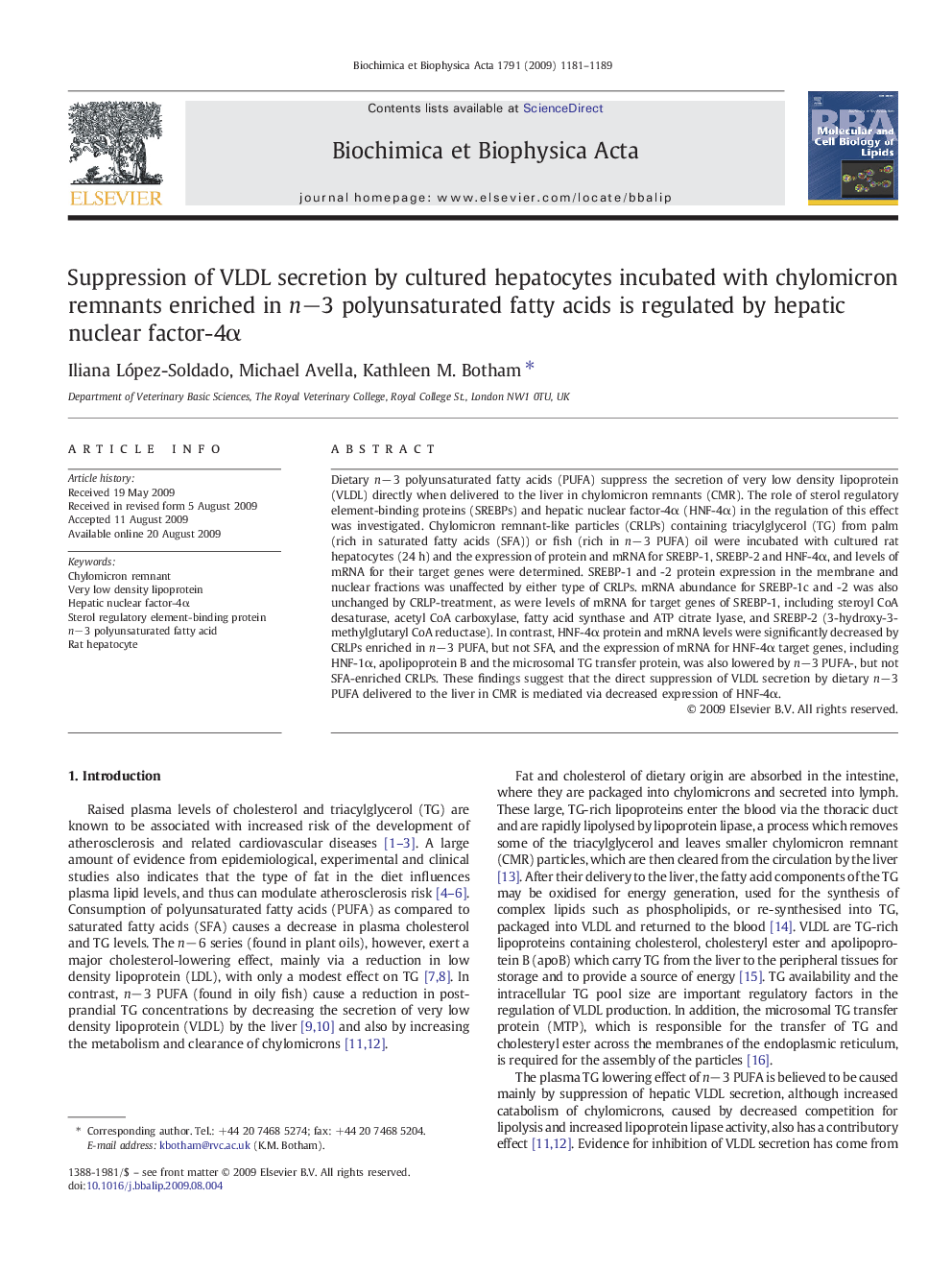| Article ID | Journal | Published Year | Pages | File Type |
|---|---|---|---|---|
| 1949789 | Biochimica et Biophysica Acta (BBA) - Molecular and Cell Biology of Lipids | 2009 | 9 Pages |
Abstract
Dietary nâ 3 polyunsaturated fatty acids (PUFA) suppress the secretion of very low density lipoprotein (VLDL) directly when delivered to the liver in chylomicron remnants (CMR). The role of sterol regulatory element-binding proteins (SREBPs) and hepatic nuclear factor-4α (HNF-4α) in the regulation of this effect was investigated. Chylomicron remnant-like particles (CRLPs) containing triacylglycerol (TG) from palm (rich in saturated fatty acids (SFA)) or fish (rich in nâ 3 PUFA) oil were incubated with cultured rat hepatocytes (24 h) and the expression of protein and mRNA for SREBP-1, SREBP-2 and HNF-4α, and levels of mRNA for their target genes were determined. SREBP-1 and -2 protein expression in the membrane and nuclear fractions was unaffected by either type of CRLPs. mRNA abundance for SREBP-1c and -2 was also unchanged by CRLP-treatment, as were levels of mRNA for target genes of SREBP-1, including steroyl CoA desaturase, acetyl CoA carboxylase, fatty acid synthase and ATP citrate lyase, and SREBP-2 (3-hydroxy-3-methylglutaryl CoA reductase). In contrast, HNF-4α protein and mRNA levels were significantly decreased by CRLPs enriched in nâ 3 PUFA, but not SFA, and the expression of mRNA for HNF-4α target genes, including HNF-1α, apolipoprotein B and the microsomal TG transfer protein, was also lowered by nâ 3 PUFA-, but not SFA-enriched CRLPs. These findings suggest that the direct suppression of VLDL secretion by dietary nâ 3 PUFA delivered to the liver in CMR is mediated via decreased expression of HNF-4α.
Keywords
Related Topics
Life Sciences
Biochemistry, Genetics and Molecular Biology
Biochemistry
Authors
Iliana López-Soldado, Michael Avella, Kathleen M. Botham,
